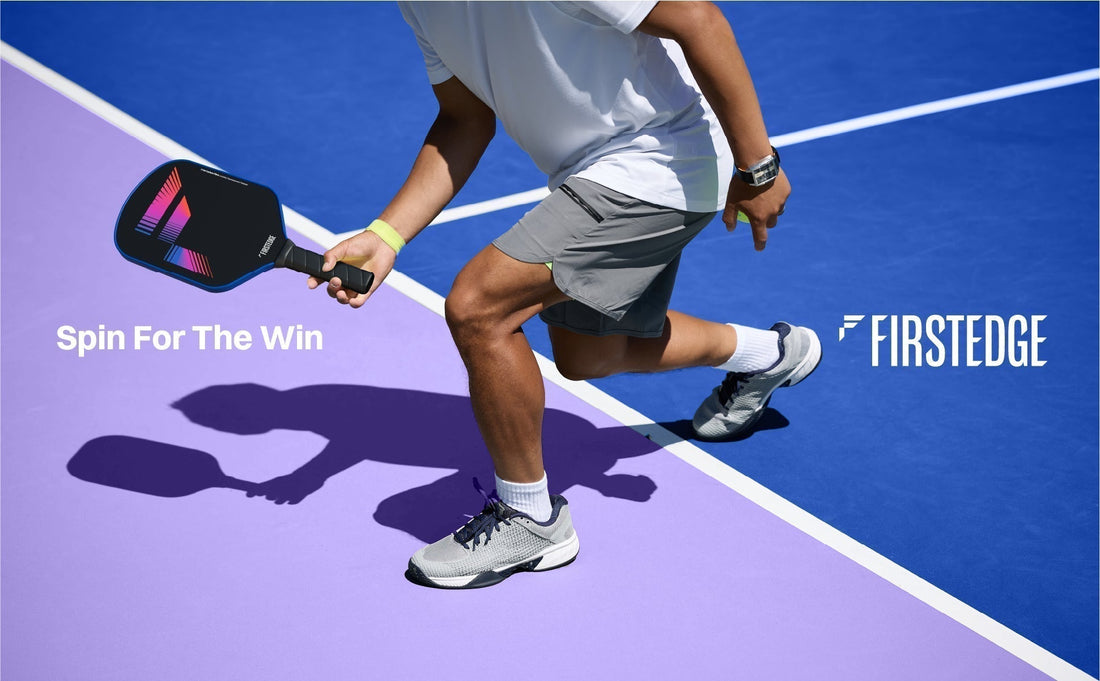
Pickleball Paddle Materials Explained: fibreglass vs carbon fibre vs raw carbon fibre

When selecting a pickleball paddle, the material of the hitting surface plays a crucial role in performance, durability, and overall gameplay experience. Players often ask: What’s the difference between fiberglass, carbon fiber, and raw carbon fiber paddles—and which one is right for me?
This guide breaks down each material’s characteristics, benefits, and ideal use cases to help players make an informed decision.
When selecting a pickleball paddle, the material of the hitting surface plays a crucial role in performance, durability, and overall gameplay experience. Players often ask: What’s the difference between fiberglass, carbon fiber, and raw carbon fiber paddles—and which one is right for me?
This guide breaks down each material’s characteristics, benefits, and ideal use cases to help players make an informed decision.
1. Fiberglass Paddles: Power & Flexibility
Best for: Players who prioritize power and a softer feel
Key Features:
Composite Construction: Fiberglass paddles feature a fiberglass face layered over a polymer (usually polypropylene) core.
· Flexible Surface: The material has slight give, creating a trampoline effect for added power.
· Softer Ball Response: Generates a more forgiving feel on off-center hits.
· Performance Breakdown:
· Power: Fiberglass excels in generating power, making it ideal for aggressive hitters.
· Touch: Offers decent touch but not as precise as carbon fiber.
Durability: Resistant to scratches but may wear faster than carbon fiber over time.
Who Should Use It?
· Baseline players who rely on drives and smashes
· Beginners transitioning from tennis (familiar power-driven feel)
· Players with arm sensitivity (softer impact reduces vibration)
2. Carbon Fiber Paddles: Balanced Performance
Best for: Players seeking a mix of power, control, and spin
Key Features:
· High-Stiffness Surface: Carbon fiber offers a rigid, responsive feel.
· Enhanced Ball Control: Less flex than fiberglass, allowing for precise shot placement.
· Spin Potential: Textured carbon fiber surfaces improve grip on the ball.
Performance Breakdown:
· Control: Superior precision for dinks, drops, and placement shots.
· Power: Less "pop" than fiberglass but still strong when paired with a thick core.
· Durability: Highly resistant to wear, maintaining performance longer.
Who Should Use It?
· All-court players who want versatility
· Intermediate to advanced players refining their strategy
· Those who value a blend of power and finesse
Sports Insight:
The Firstedge T700 Carbon Series delivers tournament-level control with a responsive carbon fiber face, ideal for competitive players.
3. Raw Carbon Fiber Paddles: Maximum Spin & Control
Best for: Advanced players who prioritize spin and touch
Key Features:
· Unfinished Surface: Raw carbon fiber has a rough, textured face straight from the mold (no added coatings).
· Exceptional Grip on Ball: The abrasive surface generates unmatched spin.
· Crisp Feedback: Provides a direct, connected feel with the ball.
Performance Breakdown:
· Spin: The roughest surface of the three, allowing extreme topspin and slice.
· Control: Pinpoint accuracy for advanced shot-making.
· Power: Requires more player-generated power compared to fiberglass.
Who Should Use It?
· Competitive players who use heavy spin
· Net players specializing in soft-game strategies
· Those who prefer a "connected" feel with the ball
Firstedge Sports Insight:
The Firstedge T700 RAW Series is engineered for elite spin and touch, favored by players who want total command over their shots.
Comparison Summary: Which One Wins?
| High | Medium-High | Medium | |
|
How to Choose the Right Material for Your Game 1. Playstyle Matters · Aggressive Baseliner? → Fiberglass for power-driven play. · Versatile All-Courter? → Standard carbon fiber for balance. · Spin & Touch Specialist? → Raw carbon fiber for maximum control. 2. Skill Level Considerations · Beginners: Fiberglass offers forgiveness and easy power. · Intermediate: Carbon fiber helps develop control. · Advanced: Raw carbon fiber maximizes spin potential.
3. Arm Comfort Players with elbow or wrist sensitivity may prefer fiberglass for its dampening effect, while raw carbon fiber provides a firmer feedback that some advanced players prefer. Firstedge Sports Recommendations · For Power & Comfort: PowerFlex (Fiberglass) · For Balanced Play: Firstedge T700 Carbon Fiber · For Elite Spin: Firstedge T700 RAW Carbon Fiber Each paddle in the Firstedge lineup is engineered with high-performance materials to match different playing styles. Final Thoughts There’s no single "best" material—only the best choice for a player’s individual game. Fiberglass brings power, carbon fiber offers balance, and raw carbon fiber delivers unparalleled spin. Players looking to elevate their game should consider demoing different paddles to feel the differences firsthand. Firstedge provides premium options across all three categories, ensuring every player finds their perfect match. For more insightful pickle ball facts and drills stay tuned: https://www.firstedgesports.com/
|
Newsletter
Sign up our news letter and get an exclusive offers & latest updating
- Choosing a selection results in a full page refresh.
- Opens in a new window.

